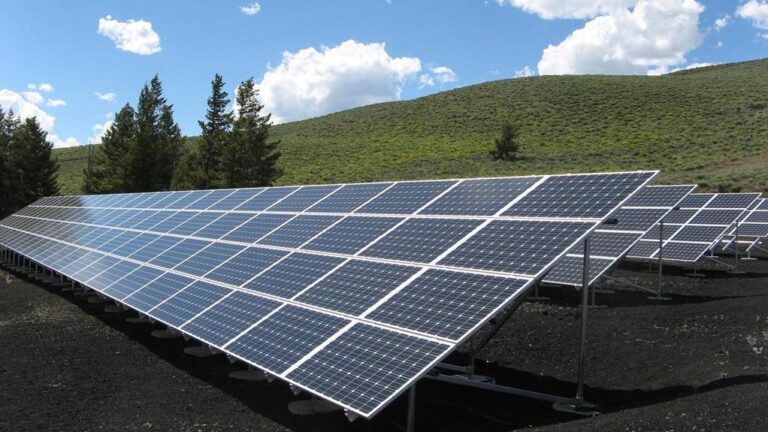5 Best Policies Revolutionizing Sustainable Energy Impact
Have you ever wondered if there are policies that are truly revolutionizing the impact of sustainable energy? Well, we’ve got some exciting news for you! We’ve discovered five incredible policies that are making a significant difference in the world of sustainable energy.
These policies, implemented by governments around the globe, are shaping a more sustainable future for all of us. From carbon pricing and emissions trading to renewable energy incentives and research funding, these policies are transforming the way we produce and consume energy.
So, if you’re looking to belong to a community that is actively working towards a greener planet, join us as we delve into the world of the 5 Best Policies Revolutionizing Sustainable Energy Impact.
Carbon Pricing and Emissions Trading
We believe that implementing a comprehensive carbon pricing and emissions trading system is crucial for achieving significant reductions in greenhouse gas emissions.
Carbon pricing mechanisms, such as carbon taxes or cap-and-trade systems, provide economic incentives to reduce emissions and transition towards a sustainable energy system. By putting a price on carbon, we can discourage the burning of fossil fuels and encourage the adoption of renewable energy sources and energy efficiency measures.
This policy framework creates a level playing field for businesses to innovate and invest in low-carbon technologies. It also provides a source of revenue that can be reinvested in clean energy projects and research and development.
Renewable Portfolio Standards
One important policy contributing to the revolution in sustainable energy impact is the implementation of Renewable Portfolio Standards (RPS), which mandate a specific percentage of electricity generation from renewable sources. RPS policies have played a crucial role in driving the growth of renewable energy technologies and clean energy technologies.
By setting clear targets for renewable energy deployment, RPS policies have provided a framework for accelerating energy transitions and encouraging investments in renewable energy. These standards haven’t only reduced greenhouse gas emissions but also fostered the development of innovative technologies in the power sector.
Additionally, RPS policies have created new job opportunities in the renewable energy sector and contributed to the development of a more diversified and resilient energy infrastructure.
Feed-In Tariffs and Renewable Energy Incentives
The implementation of Feed-In Tariffs and renewable energy incentives has further propelled the revolution in sustainable energy impact. These policies have played a crucial role in incentivizing the production of renewable energy and reducing our reliance on fossil fuels.
By offering financial incentives to renewable energy producers, Feed-In Tariffs encourage investment in clean energy technologies and promote the transition to a more sustainable energy mix. This is particularly important in the face of climate change and the need to reduce greenhouse gas emissions.
With Feed-In Tariffs, renewable energy sources such as solar, wind, and hydroelectric power can contribute significantly to our electricity production. These policies not only support the growth of renewable energy capacity but also create a sense of belonging and collective effort in building a more sustainable future.
Energy Efficiency Standards and Building Codes
Energy efficiency standards and building codes play a crucial role in driving sustainable energy impact by promoting energy-saving measures and operational efficiency in buildings. These standards aim to improve energy efficiency in various areas such as appliances, lighting, insulation, and HVAC systems.
By reducing energy consumption and greenhouse gas emissions, they contribute to addressing the environmental impact of building energy use and combatting climate change. Implementing energy performance schemes encourages operational efficiency and energy-saving measures, further supporting energy efficiency standards.
Retrofit-ready requirements for new builds facilitate the transition to more energy-efficient technologies, aligning with the goal of energy efficiency standards and building codes. Government support for innovation and research and development funding is essential for promoting energy-efficient technologies and ensuring they meet the required standards.
These standards and codes are crucial for achieving sustainable development, reducing reliance on fossil fuels, increasing the use of renewable energy sources, and minimizing global greenhouse gas emissions from electricity generation and energy consumption. Technology innovation plays a significant role in continuously improving energy efficiency standards and building codes.
Research and Development Funding for Clean Energy Technologies
To continue our discussion on energy efficiency standards and building codes, let’s explore the significant impact of research and development funding for clean energy technologies.
Research and development funding plays a crucial role in revolutionizing the energy sector by driving innovation and the adoption of sustainable energy solutions. By providing financial support for the development of clean energy technologies, governments can accelerate the transition towards a low-carbon economy.
This funding enables scientists and engineers to explore new ideas and technologies that can reduce greenhouse gas emissions and combat global climate change. Moreover, sustained funding for research and development can help improve the performance and reduce the costs of renewable technologies, making them more accessible and competitive in the market.
Conclusion
These policies are like a breath of fresh air, breathing new life into the world of sustainable energy. From carbon pricing and emissions trading to research and development funding, governments are stepping up to drive the transition to a greener future.
Renewable portfolio standards, feed-in tariffs, and energy efficiency codes are all playing a vital role in revolutionizing the impact of sustainable energy. With these policies in place, we can look forward to a brighter and more sustainable energy future.





